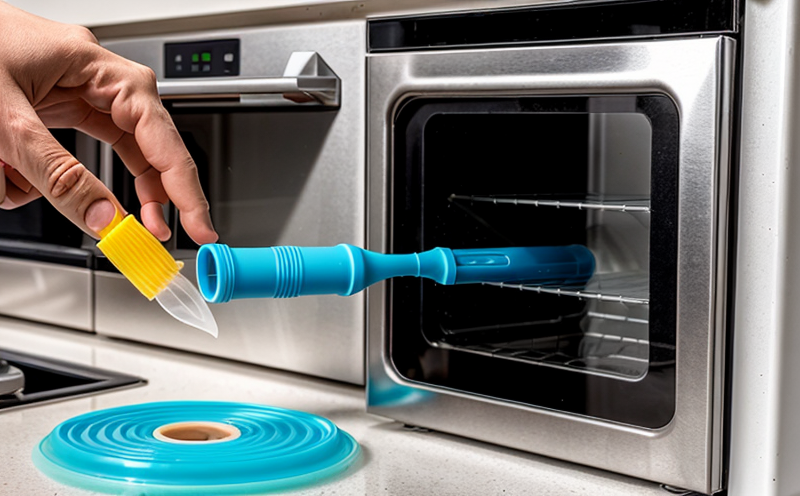ISO 4589 Oxygen Index Flammability Testing of Household Plastics
The ISO 4589 Oxygen Index (OI) test is a fundamental method used to determine the flammability of plastics. This test measures the minimum oxygen concentration required for a plastic sample to sustain flaming combustion under controlled conditions. The test is particularly important in household plastics where safety, compliance, and performance are critical.
The OI value ranges from 0% to 100%, with a higher index indicating a material that requires more oxygen to ignite and maintain combustion. This test is widely used in industries such as electronics, automotive, and consumer goods because it helps ensure the safety of products by preventing the spread of fire.
The process involves placing a small sample of plastic between two metal plates within an oxygen-rich atmosphere. The oxygen concentration is gradually reduced until the flame goes out. The test apparatus typically includes an oxygen generator capable of adjusting the oxygen level and an ignition source such as a spark or hot wire. The specimen must be prepared according to ISO 4589 standards, which include specific dimensions and surface finish requirements.
The accuracy and reproducibility of this test are crucial for ensuring reliable results. Factors that can affect the outcome include the purity of oxygen used, the homogeneity of the sample, and the temperature control during testing. Compliance with international standards like ISO 4589 ensures consistent results across different laboratories and jurisdictions.
The results from this test are essential for product development, quality assurance, and regulatory compliance. Manufacturers can use these data to optimize their formulations, ensuring that the plastic meets safety requirements without compromising performance. Regulatory bodies often mandate OI testing as part of product certification processes.
In summary, ISO 4589 Oxygen Index Testing is a critical tool for assessing the flammability properties of household plastics. It provides valuable information to ensure products are safe and compliant with industry standards. By understanding the test parameters, specimen preparation requirements, and the apparatus used, stakeholders can make informed decisions that enhance product safety.
Benefits
- Ensures product safety by preventing potential fire hazards.
- Aids in optimizing material formulations for enhanced performance and compliance.
- Serves as a critical tool for regulatory compliance, especially when mandated by standards or regulations.
- Provides valuable data for quality assurance programs to improve product reliability.
Why Choose This Test
The ISO 4589 Oxygen Index Flammability Testing of Household Plastics is essential for ensuring the safety and compliance of household products. By choosing this test, stakeholders can guarantee that their products meet international standards and regulations.
This testing method offers several advantages over other flammability tests. It provides a standardized approach to measuring fire resistance, making it easier to compare results across different laboratories and jurisdictions.
The test is particularly useful for household plastics due to the wide range of materials used in these products. From packaging materials to electrical components, ensuring that each material meets safety standards is crucial. By choosing this test, manufacturers can reduce risks associated with fire hazards and improve product quality.
In summary, ISO 4589 Oxygen Index Testing stands out for its reliability, accuracy, and compliance with international standards. It offers a robust framework for assessing the flammability of household plastics, ensuring that products are safe and meet regulatory requirements.
Quality and Reliability Assurance
Ensuring quality and reliability in household plastics is paramount to maintaining consumer trust and safety. ISO 4589 Oxygen Index Testing plays a vital role in this process by providing accurate and consistent results. This test ensures that products meet stringent safety standards, thereby reducing the risk of fire hazards.
The high level of expertise and advanced equipment used in our testing facilities ensure precise and reliable results. Our laboratories are equipped with state-of-the-art apparatus capable of accurately measuring oxygen concentration and igniting samples under controlled conditions. We adhere strictly to ISO 4589 standards, ensuring that every test is conducted consistently.
Our commitment to quality extends beyond the testing process itself. We also offer comprehensive support services, including specimen preparation guidance, training sessions for clients, and detailed reporting. This ensures that our clients have a full understanding of their results and can make informed decisions based on them.
In conclusion, ISO 4589 Oxygen Index Testing is an indispensable tool for maintaining product quality and reliability in household plastics. By choosing this test, stakeholders can ensure that their products are safe, compliant, and meet the highest standards of quality.
Frequently Asked Questions
- Ensures product safety by preventing potential fire hazards.
- Aids in optimizing material formulations for enhanced performance and compliance.
- Serves as a critical tool for regulatory compliance, especially when mandated by standards or regulations.
- Provides valuable data for quality assurance programs to improve product reliability.





